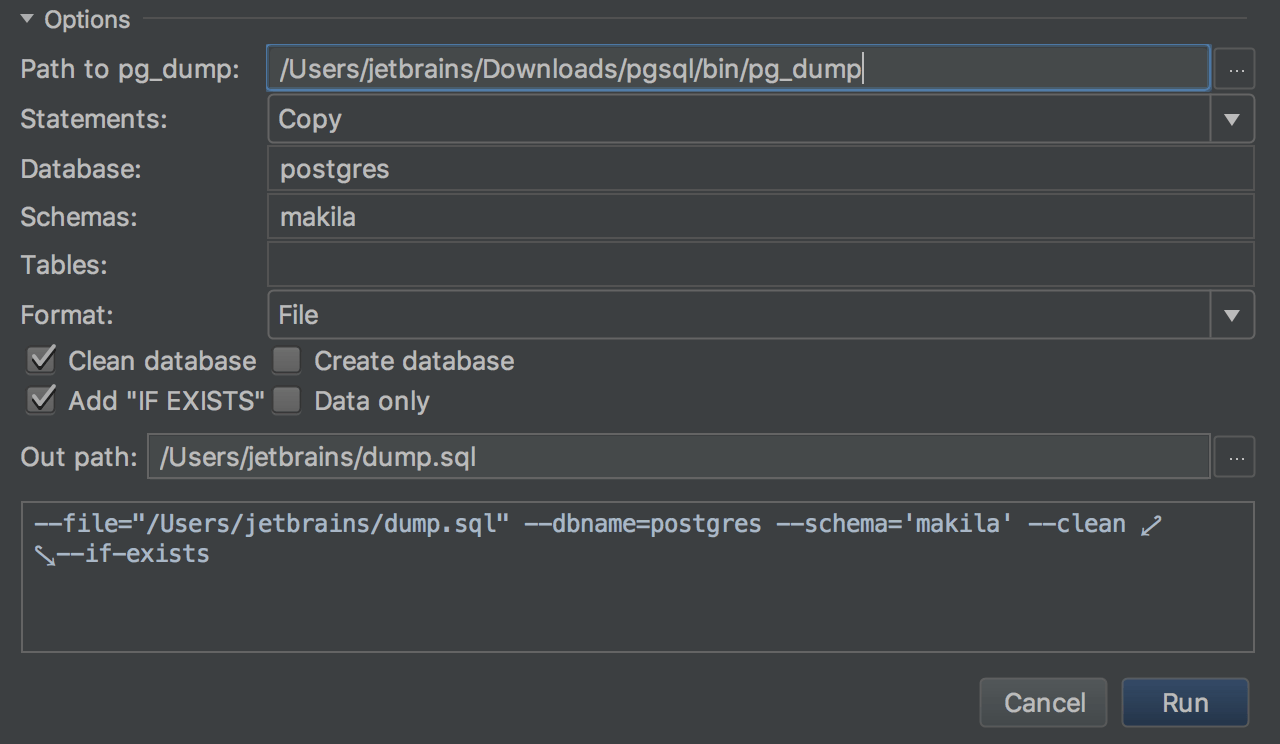

When this option is enabled, query results are not transposed. To make this mode a default for tables and views, open settings by pressing Ctrl+Alt+S and navigate to Database | Data Views and select the Automatically transpose tables. If you click this button and define the CSV format in the corresponding dialog, then the editable table with the content of your CSV file will open. You will see a floating toolbar with the Edit as Table button. Right-click any cell in a table and then click View as | Transpose to switch rows and columns. DataGrip also has the ability to edit CSV files as tables. Right-click the column header or individual cell and then click Edit As to select a language and provide coding assistance when modifying the contents. To toggle between hidden and shown state of a column, select it in the list and press Space. COPY Table Name TO File Name DELIMITER, CSV HEADER For example, copying a table called albums to a file named /Users/dave/Downloads/albums.csv would be done with.
#DATAGRIP EXPORT TO CSV FULL#
Names of hidden columns are shown struck through. To copy a full table to a file you can simply use the following format, with Table Name and File Name being the name of your table and output file respectively. The left-hand panel is for format specification: choose the delimiter, whether the first row is. Then choose the CSV file where your data is. Click the schema you want import data to, and choose Import From File from the context menu. To see the list of all columns, right-click any column header and then click Column List. It will help you to import CSV, TSV (well, DSV) files to the database. Right-click the column header and then click Hide column. The number indicates the sorting level (priority), when you sort by multiple columns. Sort dataĬlick the column header to toggle between sorting directions: ascending, descending, and initial unsorted state. Right-click any cell or column header to access available commands for modifying the table. Then choose the delimiter, specify if the table has a header, and when to quote values, etc. Click on Edit As Table in the context menu. If you want to use different format settings, repeat the previous procedure and open the data editor again. CSV editor DataGrip can edit CSV files as tables. The data editor opens in a separate tab based on the settings you configure. If you want to edit only part of the data, select the necessary fragment inside the file. Text presents data in a text format, Data in a table format. Two tabs for the file become visible: Text and Data. For example, you may require comma-separated values with semicolons as row separators. The dialog has two predefined formats (CSV and TSV) and lets you create a custom format. In the dialog that opens, specify format settings and click OK. Also, you can click the Edit as Table icon in the editor. Right-click inside a delimited text file and then click Edit as Table.


 0 kommentar(er)
0 kommentar(er)
